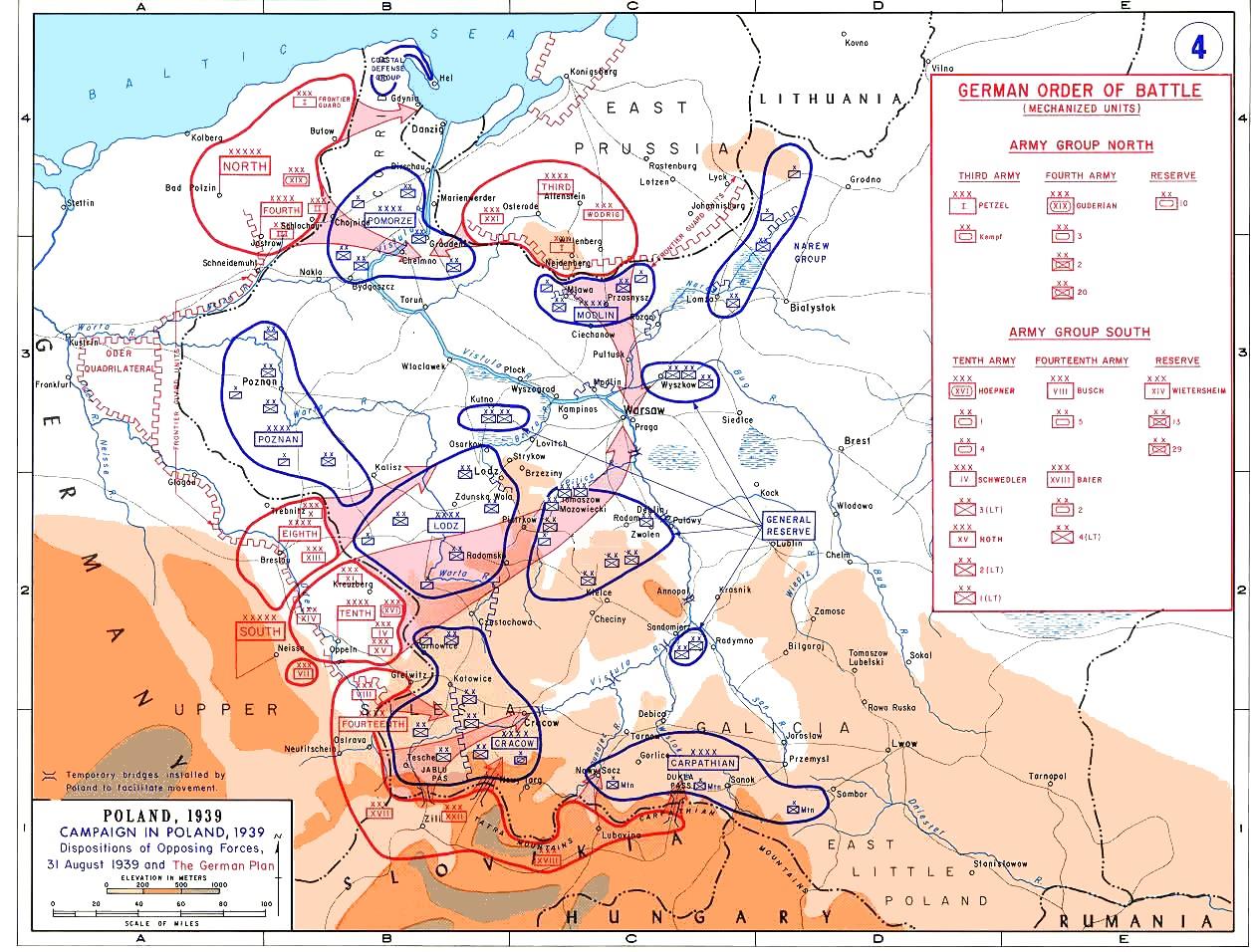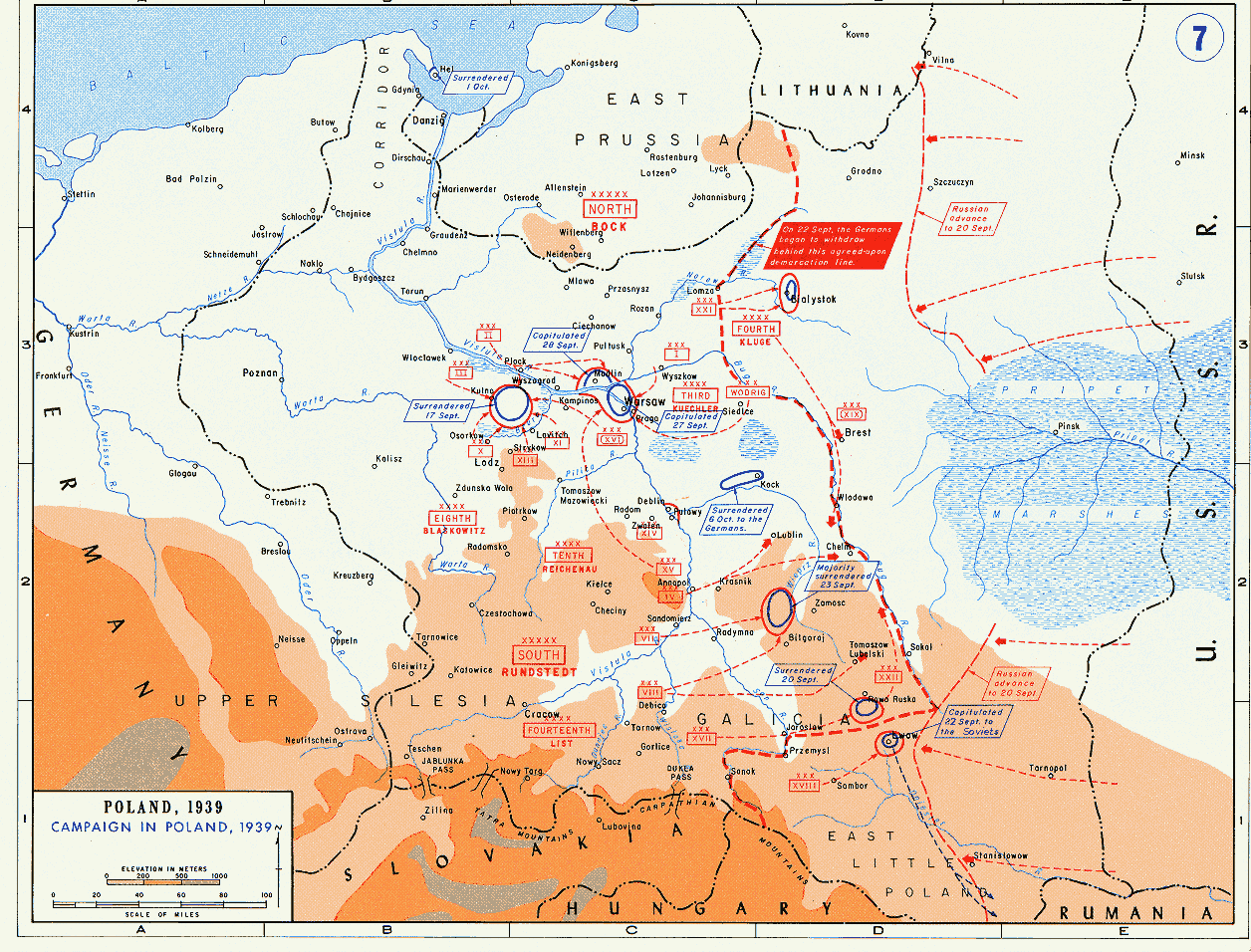Prusy Army on:
[Wikipedia]
[Google]
[Amazon]
The Prusy Army () was one of the Polish armies to fight during the


 According to the "Plan West" ('' Plan Zachód'', the code name for the Polish mobilization plan) it was to be composed of units mobilized as the second and third waves, and its main purpose was to cooperate with the nearby armies "
According to the "Plan West" ('' Plan Zachód'', the code name for the Polish mobilization plan) it was to be composed of units mobilized as the second and third waves, and its main purpose was to cooperate with the nearby armies "
Armie i samodzielne grupy operacyjne Wojska Polskiego 1939
Invasion of Poland
The invasion of Poland, also known as the September Campaign, Polish Campaign, and Polish Defensive War of 1939 (1 September – 6 October 1939), was a joint attack on the Second Polish Republic, Republic of Poland by Nazi Germany, the Slovak R ...
in 1939. Created in the summer of 1939 as the main reserve of the Commander in Chief, it was commanded by Gen. Stefan Dąb-Biernacki. The word ''Prusy'' in the Polish language means Prussia
Prussia (; ; Old Prussian: ''Prūsija'') was a Germans, German state centred on the North European Plain that originated from the 1525 secularization of the Prussia (region), Prussian part of the State of the Teutonic Order. For centuries, ...
, but this name only served as a codename and the region of operations of this army was far from East Prussia
East Prussia was a Provinces of Prussia, province of the Kingdom of Prussia from 1772 to 1829 and again from 1878 (with the Kingdom itself being part of the German Empire from 1871); following World War I it formed part of the Weimar Republic's ...
. This is in contrast to other Polish armies in 1939 which were named after the geographical regions where they formed. The Prusy Army, whose original name was Warszawa Army, was named so after a folwark in central Poland called Prusy, which served as the headquarters of General Dąb-Biernacki.
Tasks


 According to the "Plan West" ('' Plan Zachód'', the code name for the Polish mobilization plan) it was to be composed of units mobilized as the second and third waves, and its main purpose was to cooperate with the nearby armies "
According to the "Plan West" ('' Plan Zachód'', the code name for the Polish mobilization plan) it was to be composed of units mobilized as the second and third waves, and its main purpose was to cooperate with the nearby armies "Łódź
Łódź is a city in central Poland and a former industrial centre. It is the capital of Łódź Voivodeship, and is located south-west of Warsaw. Łódź has a population of 655,279, making it the country's List of cities and towns in Polan ...
" and "Kraków
, officially the Royal Capital City of Kraków, is the List of cities and towns in Poland, second-largest and one of the oldest cities in Poland. Situated on the Vistula River in Lesser Poland Voivodeship, the city has a population of 804,237 ...
". It was being mobilized in two groups after the outbreak of hostilities. It consisted of 6 infantry divisions, 1 cavalry brigade and a battalion of tanks. Once ready, it was supposed to stop the main German thrust. The army, divided into two groups, northern and southern, was concentrated southwest of Warsaw (in the triangle between Kielce
Kielce (; ) is a city in south-central Poland and the capital of the Świętokrzyskie Voivodeship. In 2021, it had 192,468 inhabitants. The city is in the middle of the Świętokrzyskie Mountains (Holy Cross Mountains), on the banks of the Silnic ...
, Radom
Radom is a city in east-central Poland, located approximately south of the capital, Warsaw. It is situated on the Mleczna River in the Masovian Voivodeship. Radom is the fifteenth-largest city in Poland and the second-largest in its province w ...
, and Tomaszów Mazowiecki
Tomaszów Mazowiecki (, or ''Tomashuv'') is a city in central Poland with 60,529 inhabitants (2021). It is the fourth most populous city in the Łódź Voivodeship and the second with free public transport. It is the seat of Tomaszów County, Ł ...
), as Marshall Edward Śmigły-Rydz was convinced that main German thrust would be directed at Warsaw, via Łódź
Łódź is a city in central Poland and a former industrial centre. It is the capital of Łódź Voivodeship, and is located south-west of Warsaw. Łódź has a population of 655,279, making it the country's List of cities and towns in Polan ...
.
The Northern Group of the Prusy Army was planned to be concentrated in the area Koluszki
Koluszki () is a town, and a major railway junction, in central Poland, in Łódź Voivodeship, about 20 km east of Łódź with a population of 12,776 (2020). The junction in Koluszki serves trains that go from Warsaw to Łódź, Wrocław, Cz ...
-Łowicz
Łowicz is a town in central Poland with 27,436 inhabitants (2021). It is situated in the Łódź Voivodeship. Together with a nearby station of Bednary, Łowicz is a major rail junction of central Poland, where the line from Warsaw splits into ...
-Skierniewice
Skierniewice () is a city in central Poland with 45,184 inhabitants (2023), situated in the Łódź Voivodeship. It is the capital of Skierniewice County. Through the town runs the small river Łupia, also called Skierniewka.
Located in the hist ...
, while its southern group was located in the area marked by the towns of Skarżysko-Kamienna
Skarżysko-Kamienna () is a city in northern Świętokrzyskie Voivodeship in south-central Poland by Kamienna (river), Kamienna river, to the north of Świętokrzyskie Mountains; one of the voivodship's major cities. Prior to 1928, it bore the name ...
-Opoczno
Opoczno () is a town in south-central Poland, seat of Opoczno County in the Łódź Voivodeship. It has a long and rich history, and in the past it used to be one of the most important urban centers of northwestern Lesser Poland. Currently, Opoczno ...
-Radom
Radom is a city in east-central Poland, located approximately south of the capital, Warsaw. It is situated on the Mleczna River in the Masovian Voivodeship. Radom is the fifteenth-largest city in Poland and the second-largest in its province w ...
. After detraining, the units of the Army were to take positions in the following towns: 44th I.D. - Sochaczew, 13th I.D - Regny, 19th I.D. - Tomaszów Mazowiecki, Wilno Cavalry Brigade - Piotrków Trybunalski, 29th I.D. - Sulejów, 36th I.D. - Opoczno, 12th I.D. - Końskie, 3rd I.D. - Skarżysko-Kamienna, 39th I.D. - Kozienice.
Polish military strategists correctly predicted that German forces would try to push in between the armies "Łódź" and "Krakow," but they failed to predict the fast pace of the German advance. Therefore, in Polish plans "Armia Prusy" was to be fully mobilized only by 14 September 1939, while in reality, it needed to be ready as soon as the late night of 3 September 1939. As Polish historians Czesław Grzelak and Henryk Stańczyk wrote: "Polish planners miscalculated the speed of the advance of German panzer and motorized units, and plans for the conflict were based on the experiences of the First World War".Czesław Grzelak, Henryk Stańczyk Kampania polska 1939 roku, page 182. Oficyna Wydawnicza RYTM Warszawa, 2005.
The Poles were surprised by how fast they would have to fall back to prevent the destruction of their units. This miscalculation led to the capture of the city of Łódź
Łódź is a city in central Poland and a former industrial centre. It is the capital of Łódź Voivodeship, and is located south-west of Warsaw. Łódź has a population of 655,279, making it the country's List of cities and towns in Polan ...
- a major setback to the Polish plan of defending the country west from the Vistula
The Vistula (; ) is the longest river in Poland and the ninth-longest in Europe, at in length. Its drainage basin, extending into three other countries apart from Poland, covers , of which is in Poland.
The Vistula rises at Barania Góra i ...
river at least until October 1939. More surprising should be that the "Polish schedule" was followed by the French one year later; they did refuse to read the report pointing out mistakes of the Polish military, and drawing conclusions on how to avoid them in the future. The report was prepared by the Polish generals and handed to the French, and the British in their respective languages, in late 1939.
Operational history
The northern group was to back up the Łódź Army nearŁódź
Łódź is a city in central Poland and a former industrial centre. It is the capital of Łódź Voivodeship, and is located south-west of Warsaw. Łódź has a population of 655,279, making it the country's List of cities and towns in Polan ...
and Sieradz
Sieradz (,) is a city on the Warta river in central Poland with 40,891 inhabitants (2021). It is the seat of the Sieradz County, situated in the Łódź Voivodeship. Sieradz is a capital of the historical Sieradz Land.
Sieradz is one of the olde ...
, while the southern group was to support Kraków Army by preparing the defence of central Vistula river area. Because of fast German advance both groups entered combat separately and most units did not reach full mobilization. Due to the deteriorating situation in the battle of the border, it was decided to push partially mobilized units of Prusy Army to the front as soon as possible. In original Polish plans, the 10th Motorized Cavalry Brigade belonged to the Prusy Army. In late July 1939, Marshall Śmigły-Rydz decided to move this unit to Kraków Army
Kraków Army () was one of the List of Polish armies, Polish armies which took part in the Invasion of Poland (1939), Polish Defensive War of 1939. It was officially created on March 23, 1939 as the main pivot of Polish defence. It was commanded by ...
.
The northern group, seriously damaged in the battles of Piotrków and Tomaszów Mazowiecki
Tomaszów Mazowiecki (, or ''Tomashuv'') is a city in central Poland with 60,529 inhabitants (2021). It is the fourth most populous city in the Łódź Voivodeship and the second with free public transport. It is the seat of Tomaszów County, Ł ...
(September 5 - September 6) was forced to cross the Vistula. The southern group, much less organized and poorly commanded, fought in the Battle of Iłża, after which it was cut off from the Vistula, encircled near Radom
Radom is a city in east-central Poland, located approximately south of the capital, Warsaw. It is situated on the Mleczna River in the Masovian Voivodeship. Radom is the fifteenth-largest city in Poland and the second-largest in its province w ...
and destroyed (September 8–9). Units of the Army which retained cohesion or broke through the German lines later fought in the defense of Warsaw or joined the other Armies in the northern-central Poland.
Organization
The army was commanded by General Stefan Dąb-Biernacki; his chief of staff was Tomasz Obertyński. Biernacki was in direct command of the Northern Group; the Southern Group was commanded by General Stanisław Skwarczyński. ----References
Armie i samodzielne grupy operacyjne Wojska Polskiego 1939
WIEM Encyklopedia
WIEM Encyklopedia (full name in - "Great Interactive Multimedia Encyclopedia"; in Polish, ''wiem'' also means 'I know') is a Polish Internet encyclopedia.
The encyclopedia was based on the first printed edition was released in mid-1990s (with Vo ...
Further reading
*Jan Wróblewski. ''Armia Prusy'', Warszawa 1986. {{Polish Armies 1939 Polish armies Military units and formations of Poland in World War II Military units and formations established in 1939